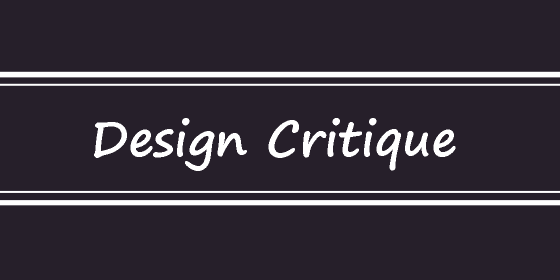Design Critique

Design critique, also known as design review or design feedback, is a structured and constructive evaluation process in which a design or prototype is presented to a group of stakeholders or peers for assessment and improvement. The primary goal of a design critique is to gather diverse perspectives, identify strengths and weaknesses in the design, and provide feedback that helps refine and enhance the final outcome.
Key aspects of a design critique include:
- Preparation: The designer or presenter prepares the design or prototype to be reviewed, ensuring that it is in a presentable format and includes relevant context and background information.
- Participants: Design critiques typically involve a group of individuals who have relevant expertise or knowledge related to the project. This may include designers, stakeholders, subject matter experts, and end-users.
- Guided Discussion: The critique session is guided by a moderator or facilitator who ensures that the discussion remains focused, constructive, and respectful.
- Feedback: Participants share their observations, insights, and opinions about the design. Feedback may address aspects such as aesthetics, functionality, usability, and alignment with project objectives.
- Diverse Perspectives: The value of a design critique lies in gathering diverse perspectives. Participants with different backgrounds and roles may offer unique insights that enrich the feedback.
- Actionable Recommendations: The feedback provided in a design critique should be specific, actionable, and aimed at improving the design.
Design critiques can take various formats, including in-person meetings, virtual sessions, or written feedback. Some design teams use a structured framework for critiques, while others adopt a more informal approach. Regardless of the format, the key is to create a constructive and safe environment where participants feel comfortable sharing their thoughts and ideas.
The benefits of design critique include:
- Quality Improvement: By receiving diverse feedback, designers can identify areas of improvement and enhance the design’s overall quality.
- Validation of Design Decisions: Critiques help designers validate their design decisions and gather evidence to support their choices.
- Learning Opportunity: Participating in a design critique is a valuable learning opportunity for both presenters and participants, fostering professional growth and development.
- Collaboration and Alignment: Design critiques facilitate collaboration among team members and stakeholders, ensuring that everyone is aligned with the project’s goals and vision.
- Confidence Building: For designers, receiving constructive feedback can boost their confidence and help them refine their skills.
Design critiques are an essential part of the design process, promoting continuous improvement and fostering a culture of open communication and collaboration within design teams and organizations.